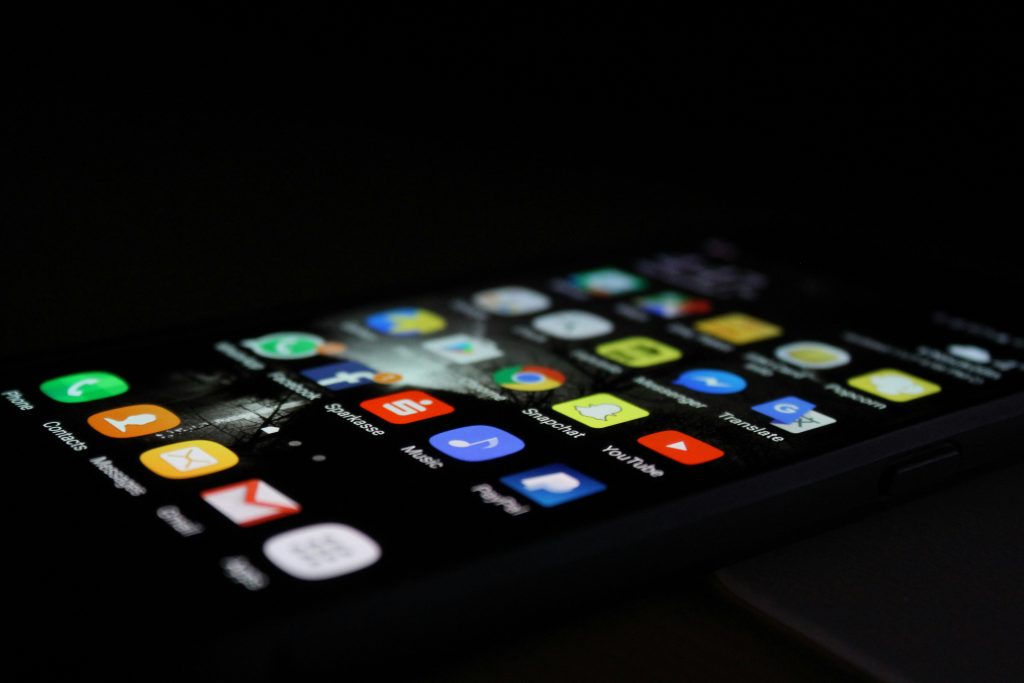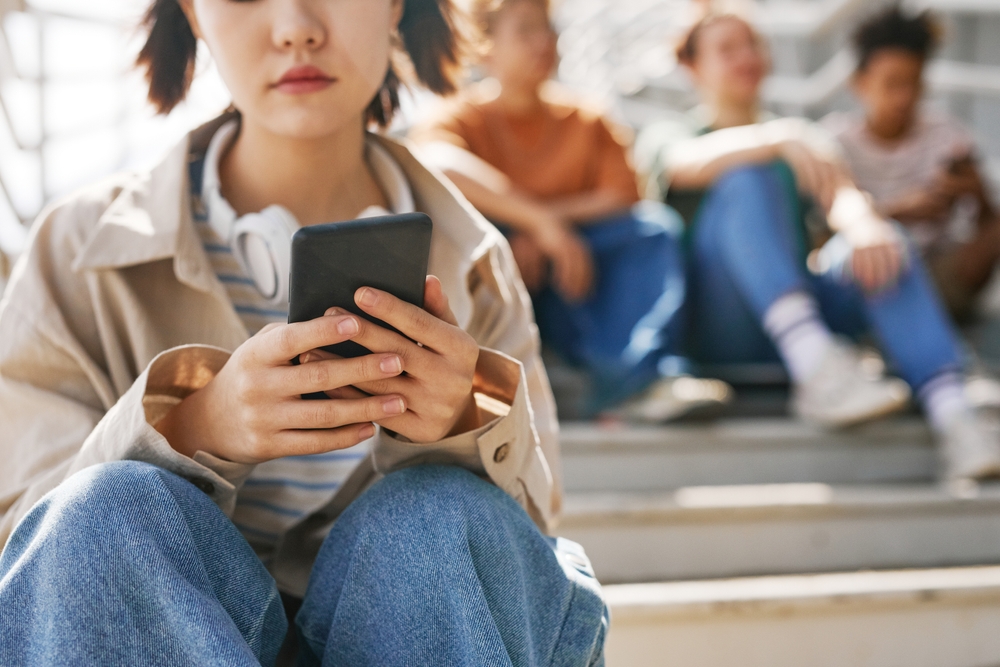
Recently, it looks like all of the media reporting we encounter concerning the worsening state of youth psychological well being inevitably cites social media as a wrongdoer (e.g., Bahr, 2024; Frist, 2024). Considerations concerning the impression of on-line platforms are comprehensible, contemplating their colossal function within the lives of younger individuals: as many as 96% of American teenagers report every day social media use (Anderson et al., 2023).
Analysis implicates social media in a variety of damaging outcomes for younger individuals, resembling elevated danger of self-harm, disordered consuming behaviours, melancholy and anxiousness (Sala et al., 2024). Nevertheless, research relating to the impression of social media on younger individuals’s psychological well being usually produce blended outcomes, creating uncertainty concerning the precise nature and extent of this relationship (Etchells, 2024). An extra concern is the over-representation of neighborhood samples on this literature, leaving little understanding of the impression of social media on adolescents with clinically vital psychological well being signs.
As such, the current evaluate by Fassi and colleagues (2024) sought to synthesise the literature on social media use and internalising signs (e.g. anxiousness, shyness, avoidance, nervousness, fears, disappointment, and fear) amongst adolescents, with a concentrate on quantifying the proportion of this literature inspecting scientific samples and evaluating outcomes in opposition to these for neighborhood samples.

Many younger persons are prolific social media customers – however what’s the impression of this excessive utilization on psychological well being?
Strategies
Via searches throughout 4 educational databases and one preprint database, this examine recognized 14,211 peer-reviewed articles and preprints, which have been screened by two reviewers. Inclusion standards have been cross-sectional or longitudinal research quantifying social media use and internalising signs amongst adolescents aged 10 to 24 years, printed in English on or after January 2007.
Three reviewers coded and extracted information, assessing examine high quality utilizing a modified high quality framework. Meta-analyses used random-effects fashions to pool information and study associations between social media use and internalising signs amongst scientific and neighborhood samples. Moderator analyses explored the impact of pre-determined variables on heterogeneity.
Outcomes
Systematic evaluate
The 143 included research (141 articles and a pair of preprints) included a mixed pattern of 1,094,890 adolescents. These research have been principally cross-sectional (66%) and carried out with populations from the World North (82%).
Associations between social media use and internalising signs have been examined by means of 886 whole impact sizes, 11% of which utilised scientific samples. Neighborhood samples accounted for many whole impact sizes (88%).
Most included research targeted on melancholy (67% of impact sizes) and used self-report measures (92% of impact sizes).
Simply over half of included research have been deemed to be of acceptable high quality (55%), with the rest categorised as being of questionable high quality (45%).
Meta evaluation
Social media use was positively related to internalising signs in scientific and neighborhood samples. Nevertheless, this was solely to a small diploma, and with excessive heterogeneity:
- Time spent on social media had a small, constructive affiliation with internalising signs in 7 research with adolescent scientific samples (n = 2,893; r = 0.08, 95% CI [0.01 to 0.15]; p = .03).
- Social media engagement had a small, constructive affiliation with internalizing signs in 4 research with adolescent scientific samples (n = 859; r = 0.12, 95% CI [0.09 to 0.15]; p = .002).
- Time spent on social media had a small, constructive affiliation with internalizing signs in 49 research with adolescent neighborhood samples (n = 479,215; r = 0.12, 95% CI [0.09 to 0.15]; p
- Social media engagement had a small, constructive affiliation with internalizing signs in 62 research with adolescent neighborhood samples (n = 65,799; r = 0.14, 95% CI [0.10 to 0.18]; p
No examined elements (pattern sort, age, intercourse, measures used, or conduct of examine earlier than or after COVID-19) contributed considerably to heterogeneity, and there was no proof of small examine bias.
Notably, the associations didn’t considerably differ between scientific and neighborhood samples.

Proof from this meta-analysis helps a modest hyperlink between social media use and internalising signs in adolescents from scientific and neighborhood samples. Nevertheless, scientific populations have been under-represented.
Conclusions
This systematic evaluate and meta-analysis discovered that better social media use was modestly related with greater scores on measures of internalising signs amongst adolescents. Research inspecting scientific samples represented a comparatively small proportion of the examined literature, and the excessive diploma of variability was not defined by pattern sort, measures used or demographic traits.
Although findings didn’t help vital variations between scientific versus neighborhood samples, the authors concluded that: “present analysis falls in need of adequately focusing on the particular populations required to attract correct inferences” relating to “social media’s function in elevated clinical-level psychological well being signs amongst adolescents.”

This can be a strong evaluate of the sector, which finds that we’d like extra focused analysis to raised perceive the impact of social media on younger individuals with clinical-level psychological well being signs.
Strengths and limitations
The methodological choices related to this systematic evaluate are totally documented and properly justified within the article and supplemental supplies, and lots of components of this evaluate help its rigour. A complete search technique and sound rationale for choice standards instil confidence that as a lot related literature as attainable was captured. Pre-registration of the examine protocol with PROSPERO, and adherence to PRISMA and MOOSE tips, point out that the examine was carried out and reported in keeping with greatest apply.
Limitations reported by Fassi and colleagues embody:
- Risk of response bias by means of over-reliance of self-report measures within the included literature;
- Reliance on cross-sectional information which means that causal relationships can’t be inferred;
- Incapability to generalise to scientific psychological well being circumstances past internalising signs and circumstances, which means that impacts on psychological well being extra usually can’t be decided, and elements resembling comorbid psychological well being circumstances will not be accounted for; and
- Doable language bias by means of exclusion of research not in English language.
For us, one of many key limitations on this evaluate is the substantial over-representation of examine populations from the World North, which make it troublesome to meaningfully interpret whether or not the current findings are relevant globally, particularly contemplating round 90% of adolescents reside in low- and middle-income nations (LMICs; UNICEF & WHO, 2022). In an earlier article, Ghai and colleagues (2022) talk about the present state of analysis into social media and adolescent wellbeing within the World South, and conclude that data gaps restrict generalisability and comparisons throughout completely different international areas. They posit that geopolitical, socioeconomic and cultural context are essential in contemplating the constructive and damaging impacts of social media on adolescents; elements which aren’t thought of or mentioned within the present systematic evaluate, and which can have contributed to the excessive diploma of heterogeneity reported.

This evaluate of social media use and internalising signs in adolescents is rigorous, however doesn’t account for variability throughout international contexts, regardless of many of the world’s adolescents residing in LMICs.
Implications for apply
This evaluate offers a reference for stakeholders and decision-makers to know what’s at the moment identified (and never identified) concerning the relationship between social media use and internalising signs amongst adolescents. It provides to the literature relating to impacts of social media on youth psychological well being, together with disordered consuming (see Francesca’s Psychological Elf weblog), melancholy and suicidality (see Marcus’ Psychological Elf weblog).
Findings of this examine point out a variety of analysis gaps, and the authors name for additional investigation into this affiliation amongst scientific populations, and integration of social media into prevention and intervention approaches. This evaluate has the potential to tell coverage relating to regulation of social media corporations and on-line security requirements. Nevertheless, these findings have to be interpreted and utilized with care and specificity to keep away from diminishing the complexity of this problem.
Social media is usually used as a scapegoat for worsening youth psychological well being, and we steadily see claims about its impression which can be inaccurate or overstated. Overly simplified and harm-focused rhetoric on this subject has the potential to form real-world outcomes, for higher or worse. As an example, the South Australian authorities has proposed banning social media for customers below the age of 14, “fuelled by considerations that social media was contributing to psychological sickness in younger individuals” (Boscaini, 2024). Main specialists and youth advocates warning that blanket bans won’t resolve declines in youth psychological well being however will minimize off younger individuals from an vital supply of connection and help (Taylor, 2024). On-line social help has been related to higher subjective wellbeing and psychological well being for some younger individuals (Sala et al., 2024), notably those that expertise identity-based marginalisation or have poor entry to in-person helps.
This evaluate signifies that social media doubtless performs a job within the diploma of internalizing signs skilled by some adolescents, although this affiliation is small, variable and correlational. There may be nonetheless a lot we have no idea concerning the mechanisms underpinning this affiliation, or who’s most in danger and below what circumstances. The findings of this evaluate name into query whether or not the eye paid to social media as a contributor to worsening youth psychological well being is proportional to its impression. If not, we danger shutting down subtle discussions about elements that will contribute extra considerably or failing to put money into efforts which may be more practical. Given the prevalence of psychological well being considerations among the many international youth inhabitants, this is a chance price we can not afford.

Social media use is one (small) piece of the puzzle, however extra subtle conversations about what drives worsening youth psychological well being, for whom, and through which circumstances are wanted.
Assertion of pursuits
None to declare.
Hyperlinks
Major paper
Fassi, L., Thomas, Okay., Douglas, A. P., Leyland-Craggs, A., Ford, T. J., & Orben, A. (2024). Social media use and internalizing signs in scientific and neighborhood adolescent pattern: A scientific evaluate and meta-analysis. JAMA Pediatrics, 178(8) 814-822.
Different references
Anderson, M., Faverio, M., & Gottfried, J. (2023). Teenagers, social media and expertise 2023. Pew Analysis Heart. Accessible from: https://www.pewresearch.org/wp-content/uploads/websites/20/2023/12/PI_2023.12.11-Teenagers-Social-Media-Tech_FINAL.pdf
Bahr, J. (2024 February 13). The children will not be alright: Is Australia within the midst of a youth psychological well being disaster? SBS Information. Accessible from: https://www.sbs.com.au/information/article/the-kids-arent-alright-is-australia-in-the-midst-of-a-youth-mental-health-crisis/3i2d41k4w
Bentlvegna, F. (2020). Social media use and disordered consuming: Australian examine finds a hyperlink in younger youngsters. The Psychological Elf.
Boscaini, J. (2024 Might 13). South Australia is pushing to ban social media entry for kids below 14, however how would a ban truly work? ABC Information. Accessible from: https://www.abc.web.au/information/2024-05-13/south-australia-children-social-media-ban/103838688
Etchells, P. (2024) Unlocked: The Actual Science of Screentime (and tips on how to spend it higher). Little, Brown E book Group. https://uk.bookshop.org/p/books/screens-are-not-your-enemy-pete-etchells/6585778
Frist, B. (2024 Might 6). Youth Psychological Well being Is Worsening: “Connectedness” Is The Key. Forbes. Accessible from: https://www.forbes.com/websites/billfrist/2024/05/06/youth-mental-health-is-worsening-connectedness-is-the-key/
Ghai, S., Magis-Weinberg, L., Stoilova, M., Livingstone, S., & Orben, A. (2022). Social media and adolescent well-being within the World South. Present Opinion in Psychology, 46, 101318.
Sala, A., Porcaro, L., & Gómez, E. (2024). Social Media Use and adolescents’ psychological well being and well-being: An umbrella evaluate. Computer systems in Human Behaviour Experiences, 14, 100404.
Tan, M. (2020). Social media use and melancholy in adolescence: what we (don’t) know to this point. The Psychological Elf.
Taylor, J. (2024 July 7). ‘Blunt-force strategy’: LGBTQ+ advocates say proposed teen social media ban overlooks advantages. The Guardian Australia. Accessible from: https://www.theguardian.com/media/article/2024/jul/07/australia-teen-social-media-ban-age
UNICEF & WHO. (2022). World Case for Help – UNICEF and WHO joint programme on psychological well being and psychosocial well-being and improvement of youngsters and adolescents. United Nations Youngsters’s Fund and World Well being Group. Accessible from: https://iris.who.int/bitstream/deal with/10665/364726/9789240061767-eng.pdf?sequence=1
Picture credit

Recently, it looks like all of the media reporting we encounter concerning the worsening state of youth psychological well being inevitably cites social media as a wrongdoer (e.g., Bahr, 2024; Frist, 2024). Considerations concerning the impression of on-line platforms are comprehensible, contemplating their colossal function within the lives of younger individuals: as many as 96% of American teenagers report every day social media use (Anderson et al., 2023).
Analysis implicates social media in a variety of damaging outcomes for younger individuals, resembling elevated danger of self-harm, disordered consuming behaviours, melancholy and anxiousness (Sala et al., 2024). Nevertheless, research relating to the impression of social media on younger individuals’s psychological well being usually produce blended outcomes, creating uncertainty concerning the precise nature and extent of this relationship (Etchells, 2024). An extra concern is the over-representation of neighborhood samples on this literature, leaving little understanding of the impression of social media on adolescents with clinically vital psychological well being signs.
As such, the current evaluate by Fassi and colleagues (2024) sought to synthesise the literature on social media use and internalising signs (e.g. anxiousness, shyness, avoidance, nervousness, fears, disappointment, and fear) amongst adolescents, with a concentrate on quantifying the proportion of this literature inspecting scientific samples and evaluating outcomes in opposition to these for neighborhood samples.

Many younger persons are prolific social media customers – however what’s the impression of this excessive utilization on psychological well being?
Strategies
Via searches throughout 4 educational databases and one preprint database, this examine recognized 14,211 peer-reviewed articles and preprints, which have been screened by two reviewers. Inclusion standards have been cross-sectional or longitudinal research quantifying social media use and internalising signs amongst adolescents aged 10 to 24 years, printed in English on or after January 2007.
Three reviewers coded and extracted information, assessing examine high quality utilizing a modified high quality framework. Meta-analyses used random-effects fashions to pool information and study associations between social media use and internalising signs amongst scientific and neighborhood samples. Moderator analyses explored the impact of pre-determined variables on heterogeneity.
Outcomes
Systematic evaluate
The 143 included research (141 articles and a pair of preprints) included a mixed pattern of 1,094,890 adolescents. These research have been principally cross-sectional (66%) and carried out with populations from the World North (82%).
Associations between social media use and internalising signs have been examined by means of 886 whole impact sizes, 11% of which utilised scientific samples. Neighborhood samples accounted for many whole impact sizes (88%).
Most included research targeted on melancholy (67% of impact sizes) and used self-report measures (92% of impact sizes).
Simply over half of included research have been deemed to be of acceptable high quality (55%), with the rest categorised as being of questionable high quality (45%).
Meta evaluation
Social media use was positively related to internalising signs in scientific and neighborhood samples. Nevertheless, this was solely to a small diploma, and with excessive heterogeneity:
- Time spent on social media had a small, constructive affiliation with internalising signs in 7 research with adolescent scientific samples (n = 2,893; r = 0.08, 95% CI [0.01 to 0.15]; p = .03).
- Social media engagement had a small, constructive affiliation with internalizing signs in 4 research with adolescent scientific samples (n = 859; r = 0.12, 95% CI [0.09 to 0.15]; p = .002).
- Time spent on social media had a small, constructive affiliation with internalizing signs in 49 research with adolescent neighborhood samples (n = 479,215; r = 0.12, 95% CI [0.09 to 0.15]; p
- Social media engagement had a small, constructive affiliation with internalizing signs in 62 research with adolescent neighborhood samples (n = 65,799; r = 0.14, 95% CI [0.10 to 0.18]; p
No examined elements (pattern sort, age, intercourse, measures used, or conduct of examine earlier than or after COVID-19) contributed considerably to heterogeneity, and there was no proof of small examine bias.
Notably, the associations didn’t considerably differ between scientific and neighborhood samples.

Proof from this meta-analysis helps a modest hyperlink between social media use and internalising signs in adolescents from scientific and neighborhood samples. Nevertheless, scientific populations have been under-represented.
Conclusions
This systematic evaluate and meta-analysis discovered that better social media use was modestly related with greater scores on measures of internalising signs amongst adolescents. Research inspecting scientific samples represented a comparatively small proportion of the examined literature, and the excessive diploma of variability was not defined by pattern sort, measures used or demographic traits.
Although findings didn’t help vital variations between scientific versus neighborhood samples, the authors concluded that: “present analysis falls in need of adequately focusing on the particular populations required to attract correct inferences” relating to “social media’s function in elevated clinical-level psychological well being signs amongst adolescents.”

This can be a strong evaluate of the sector, which finds that we’d like extra focused analysis to raised perceive the impact of social media on younger individuals with clinical-level psychological well being signs.
Strengths and limitations
The methodological choices related to this systematic evaluate are totally documented and properly justified within the article and supplemental supplies, and lots of components of this evaluate help its rigour. A complete search technique and sound rationale for choice standards instil confidence that as a lot related literature as attainable was captured. Pre-registration of the examine protocol with PROSPERO, and adherence to PRISMA and MOOSE tips, point out that the examine was carried out and reported in keeping with greatest apply.
Limitations reported by Fassi and colleagues embody:
- Risk of response bias by means of over-reliance of self-report measures within the included literature;
- Reliance on cross-sectional information which means that causal relationships can’t be inferred;
- Incapability to generalise to scientific psychological well being circumstances past internalising signs and circumstances, which means that impacts on psychological well being extra usually can’t be decided, and elements resembling comorbid psychological well being circumstances will not be accounted for; and
- Doable language bias by means of exclusion of research not in English language.
For us, one of many key limitations on this evaluate is the substantial over-representation of examine populations from the World North, which make it troublesome to meaningfully interpret whether or not the current findings are relevant globally, particularly contemplating round 90% of adolescents reside in low- and middle-income nations (LMICs; UNICEF & WHO, 2022). In an earlier article, Ghai and colleagues (2022) talk about the present state of analysis into social media and adolescent wellbeing within the World South, and conclude that data gaps restrict generalisability and comparisons throughout completely different international areas. They posit that geopolitical, socioeconomic and cultural context are essential in contemplating the constructive and damaging impacts of social media on adolescents; elements which aren’t thought of or mentioned within the present systematic evaluate, and which can have contributed to the excessive diploma of heterogeneity reported.

This evaluate of social media use and internalising signs in adolescents is rigorous, however doesn’t account for variability throughout international contexts, regardless of many of the world’s adolescents residing in LMICs.
Implications for apply
This evaluate offers a reference for stakeholders and decision-makers to know what’s at the moment identified (and never identified) concerning the relationship between social media use and internalising signs amongst adolescents. It provides to the literature relating to impacts of social media on youth psychological well being, together with disordered consuming (see Francesca’s Psychological Elf weblog), melancholy and suicidality (see Marcus’ Psychological Elf weblog).
Findings of this examine point out a variety of analysis gaps, and the authors name for additional investigation into this affiliation amongst scientific populations, and integration of social media into prevention and intervention approaches. This evaluate has the potential to tell coverage relating to regulation of social media corporations and on-line security requirements. Nevertheless, these findings have to be interpreted and utilized with care and specificity to keep away from diminishing the complexity of this problem.
Social media is usually used as a scapegoat for worsening youth psychological well being, and we steadily see claims about its impression which can be inaccurate or overstated. Overly simplified and harm-focused rhetoric on this subject has the potential to form real-world outcomes, for higher or worse. As an example, the South Australian authorities has proposed banning social media for customers below the age of 14, “fuelled by considerations that social media was contributing to psychological sickness in younger individuals” (Boscaini, 2024). Main specialists and youth advocates warning that blanket bans won’t resolve declines in youth psychological well being however will minimize off younger individuals from an vital supply of connection and help (Taylor, 2024). On-line social help has been related to higher subjective wellbeing and psychological well being for some younger individuals (Sala et al., 2024), notably those that expertise identity-based marginalisation or have poor entry to in-person helps.
This evaluate signifies that social media doubtless performs a job within the diploma of internalizing signs skilled by some adolescents, although this affiliation is small, variable and correlational. There may be nonetheless a lot we have no idea concerning the mechanisms underpinning this affiliation, or who’s most in danger and below what circumstances. The findings of this evaluate name into query whether or not the eye paid to social media as a contributor to worsening youth psychological well being is proportional to its impression. If not, we danger shutting down subtle discussions about elements that will contribute extra considerably or failing to put money into efforts which may be more practical. Given the prevalence of psychological well being considerations among the many international youth inhabitants, this is a chance price we can not afford.

Social media use is one (small) piece of the puzzle, however extra subtle conversations about what drives worsening youth psychological well being, for whom, and through which circumstances are wanted.
Assertion of pursuits
None to declare.
Hyperlinks
Major paper
Fassi, L., Thomas, Okay., Douglas, A. P., Leyland-Craggs, A., Ford, T. J., & Orben, A. (2024). Social media use and internalizing signs in scientific and neighborhood adolescent pattern: A scientific evaluate and meta-analysis. JAMA Pediatrics, 178(8) 814-822.
Different references
Anderson, M., Faverio, M., & Gottfried, J. (2023). Teenagers, social media and expertise 2023. Pew Analysis Heart. Accessible from: https://www.pewresearch.org/wp-content/uploads/websites/20/2023/12/PI_2023.12.11-Teenagers-Social-Media-Tech_FINAL.pdf
Bahr, J. (2024 February 13). The children will not be alright: Is Australia within the midst of a youth psychological well being disaster? SBS Information. Accessible from: https://www.sbs.com.au/information/article/the-kids-arent-alright-is-australia-in-the-midst-of-a-youth-mental-health-crisis/3i2d41k4w
Bentlvegna, F. (2020). Social media use and disordered consuming: Australian examine finds a hyperlink in younger youngsters. The Psychological Elf.
Boscaini, J. (2024 Might 13). South Australia is pushing to ban social media entry for kids below 14, however how would a ban truly work? ABC Information. Accessible from: https://www.abc.web.au/information/2024-05-13/south-australia-children-social-media-ban/103838688
Etchells, P. (2024) Unlocked: The Actual Science of Screentime (and tips on how to spend it higher). Little, Brown E book Group. https://uk.bookshop.org/p/books/screens-are-not-your-enemy-pete-etchells/6585778
Frist, B. (2024 Might 6). Youth Psychological Well being Is Worsening: “Connectedness” Is The Key. Forbes. Accessible from: https://www.forbes.com/websites/billfrist/2024/05/06/youth-mental-health-is-worsening-connectedness-is-the-key/
Ghai, S., Magis-Weinberg, L., Stoilova, M., Livingstone, S., & Orben, A. (2022). Social media and adolescent well-being within the World South. Present Opinion in Psychology, 46, 101318.
Sala, A., Porcaro, L., & Gómez, E. (2024). Social Media Use and adolescents’ psychological well being and well-being: An umbrella evaluate. Computer systems in Human Behaviour Experiences, 14, 100404.
Tan, M. (2020). Social media use and melancholy in adolescence: what we (don’t) know to this point. The Psychological Elf.
Taylor, J. (2024 July 7). ‘Blunt-force strategy’: LGBTQ+ advocates say proposed teen social media ban overlooks advantages. The Guardian Australia. Accessible from: https://www.theguardian.com/media/article/2024/jul/07/australia-teen-social-media-ban-age
UNICEF & WHO. (2022). World Case for Help – UNICEF and WHO joint programme on psychological well being and psychosocial well-being and improvement of youngsters and adolescents. United Nations Youngsters’s Fund and World Well being Group. Accessible from: https://iris.who.int/bitstream/deal with/10665/364726/9789240061767-eng.pdf?sequence=1












